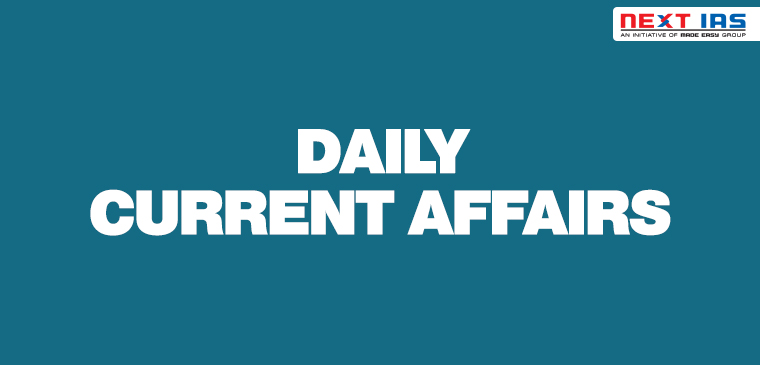
In News
Recently, the Union Education Minister has released the report of All India Survey on Higher Education (AISHE) 2019-20.
About AISHE
- The report provides key performance indicators on the current status of higher education in the country.
- The report is the 10th in the series of All India Survey on Higher Education (AISHE) annually released by the Department of Higher Education.
- The Ministry of Education has been conducting an annual web-based AISHE since 2010-11 in which it provides key performance indicators on the current status of higher education in the country.
- Data is collected on several parameters such as teachers, student enrolment, programmes, examination results, education finance and infrastructure.
- Indicators of educational development such as Institution Density, Gross Enrolment Ratio (GER), Pupil-Teacher ratio (PTR), Gender Parity Index (GPI) and Per Student Expenditure (PSE) will also be calculated from the data collected through AISHE.
Major Findings
- In the last five years from 2015-16 to 2019-20, there has been a growth of 11.4 per cent in the student enrolment.
- The rise in female enrolment in higher education during the period is 18.2 per cent.
- Total Enrolment in Higher Education: It stands at 3.85 crore in 2019-20 as compared to 3.74 crore in 2018-19, registering a growth of 11.36 lakh (3.04 per cent). Total enrollment was 3.42 crore in 2014-15.
- A total of 3.38 crore students enrolled in programmes at undergraduate and postgraduate level. Of these, nearly 85 per cent of the students (2.85 crore) were enrolled in the six major disciplines such as Humanities, Science, Commerce, Engineering & Technology, Medical Science and IT & Computer.
- Gross Enrolment Ratio (GER): It increased by a minuscule 0.8 per cent in 2019-20. It is the percentage of students belonging to the eligible age group enrolled in higher education and is calculated for 18-23 years of age group.
- It was 27.1 per cent in 2019-20 against 26.3 per cent in 2018-19 and 24.3 per cent in 2014-2015.
- The GER for male population is 26.9 and for females, it is 27.3. For Scheduled Castes, it is 23.4 and for Scheduled Tribes, it is 18.0 as compared to the national GER of 27.1.
- Gender Parity Index (GPI): GPI in higher education in 2019-20 is 1.01 against 1.00 in 2018-19. It indicates an improvement in the relative access to higher education for females of the eligible age group compared to males.
- Pupil Teacher Ratio (PTR): PTR in higher education in 2019-20 is 26. The total number of teachers stands at 15,03,156 comprising 57.5 percent male and 42.5 percent female.
- PTR is the number of students who attend a school or university divided by the number of teachers in the institution.
- Data on PhD Students: The number of students pursuing PhD in 2019-20 is 2.03 lakh against 1.17 lakh in 2014-15. However, of the 1043 universities, 42343 colleges and 11779 standalone institutions listed on the AISHE portal, only 2.7 per cent offer PhD programmes and 35.04 per cent of colleges run postgraduate (PG) level programmes
- Other Data for 2019-20
- The number of total universities is 1,043, (2 percent higher).
- The total number of colleges is 42,343 (77 percent higher).
- Total number of stand-alone institutions is 11,779, (21 percent higher).
- The number of Institutes of National Importance (INIs) have increased 80 per cent (from 75 in 2015 to 135 in 2020).
- The proportion of female students is lowest in INIs followed by Deemed University-Government, State Private University.
Significance of Higher Education
- Atmanirbhar Bharat: Self-reliant India needs a continuous supply of trained, skilled human resources, which is possible only if a strong higher education ecosystem is developed in India, to harness the potential of demographic dividend.
- Solving Societal Issues: Research in India till now has focussed majorly on the theoretical paradigm. However, it is time the research is moulded towards subjects which are nationally important and globally significant so that it contributes to nation-building.
- Plurality and Diversity: To develop horizons of the mind, it is important to provide a diversified, plural environment, in which it is possible for the students to understand others’ viewpoints and shape their own perceptions accordingly.
- Empowerment of Women: To achieve its full potential and to guide the world towards sustainable development through dissemination of spiritual knowledge, it is imperative to focus on inclusion of the better half in higher education, by rejecting the notion of gender bias in its entirety. Inclusion of women also projects better accessibility of education for the vulnerable groups to escape the vicious cycle of poverty and malnutrition.
|
Higher Education Initiatives in India
|
Source: PIB
Previous article
Autonomous Council Demand by Rengma Nagas
Next article
Facts in News


